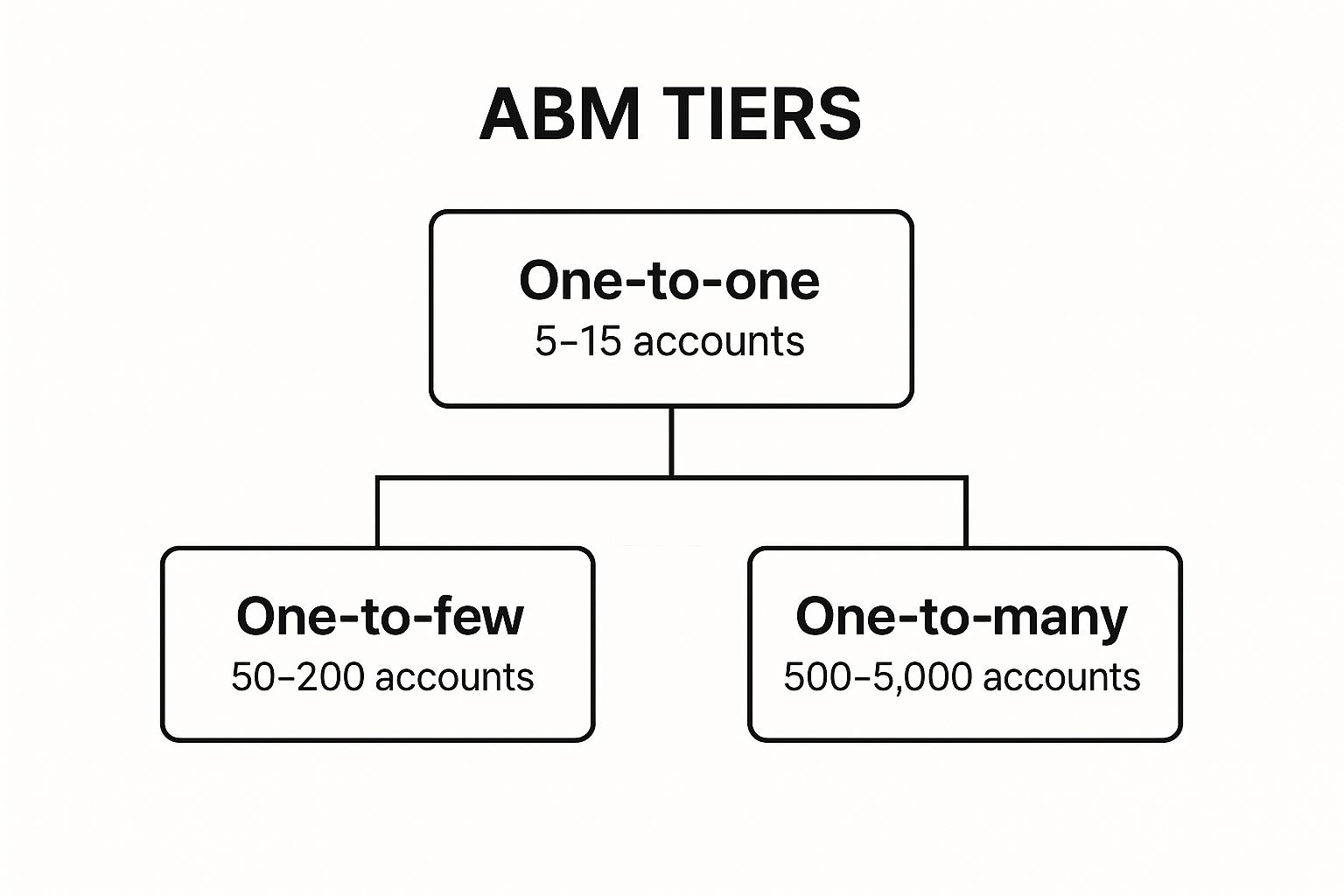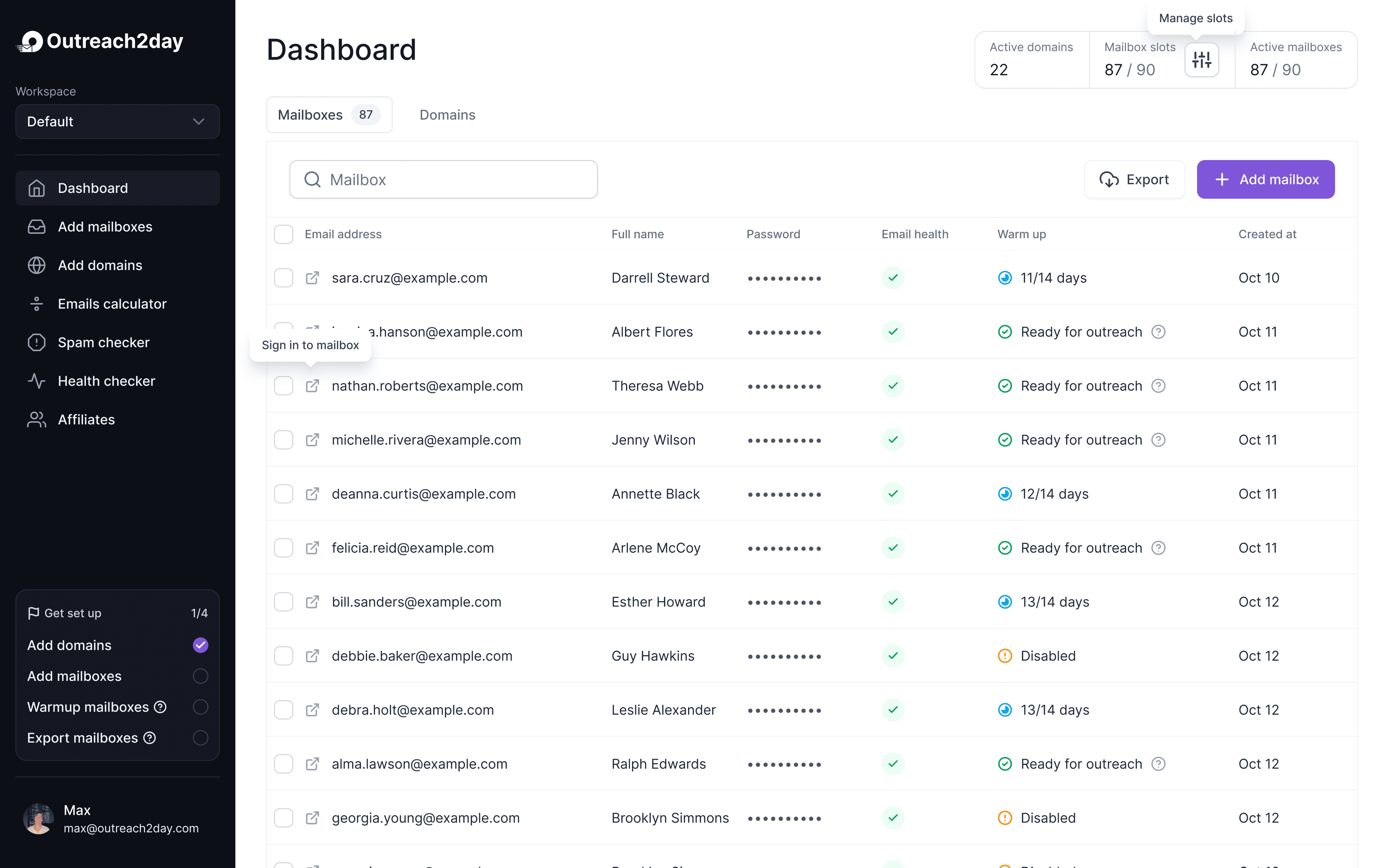Top B2B Lead Nurturing Strategies to Boost Conversions in 2025
Oct 14, 2025

In the B2B sales landscape, generating leads is only the start of a lengthy process. Many companies concentrate heavily on lead generation, only to see potential clients lose interest. B2B buying cycles are now longer and involve more stakeholders, with leads often requiring 8 to 12 interactions before a purchase. A strong nurturing process is essential to convert initial interest into revenue; without it, potential deals are lost.
This article delves into eight effective B2B lead nurturing strategies that successful companies are currently employing. It outlines precise tactics to guide prospects from awareness to decision, building trust and showcasing value throughout.
From scalable personalized email sequences to targeted Account-Based Marketing (ABM) campaigns, you'll discover practical steps, real-world examples, and proven frameworks necessary for a consistently converting pipeline. We'll cover implementing multi-channel lead scoring, social selling on LinkedIn, and personalized video use. This guide serves as a blueprint for developing a systematic approach to transforming qualified leads into loyal customers.
1. Email Drip Campaigns
Email drip campaigns are essential for B2B lead nurturing, offering consistent, personalized value. These automated sequences guide prospects through the buyer's journey with targeted emails based on timelines or actions, building relationships through relevant educational content. The main advantage is scaling with a personal touch, allowing for nurturing of thousands of leads while maintaining individualized attention. For instance, HubSpot's series educates new leads on inbound marketing, and Salesforce segments leads by industry for targeted case studies.
How to Implement Email Drip Campaigns
To create an effective campaign, begin with a clear objective, whether it is to educate, re-engage, or onboard. Define the buyer's journey and develop content for each stage.
Segment Your Audience: Group leads by criteria such as industry or engagement level for targeted messaging.
Establish a Cadence: Space emails 3-7 days apart to maintain visibility without overwhelming. Adjust based on open rates.
Craft Compelling Content: Write concise emails with strong subject lines and a clear call-to-action.
Prioritize Deliverability: Use a mix of designed and plain-text emails to ensure inbox placement. Maintain a healthy sender reputation.
Monitor and Optimize: Track metrics like open rates and unsubscribes. Adjust content or frequency if the unsubscribe rate is above 0.5%.
2. Content Marketing and Educational Resources
Content marketing is essential in modern B2B lead nurturing, focusing on creating valuable resources to address audience challenges. Instead of direct selling, it positions your brand as a trusted authority by providing genuine value through whitepapers, webinars, case studies, and blog posts. This strategy educates leads and builds credibility.
The primary benefit is trust-building through expertise. By addressing prospects' problems, you earn their trust and remain top-of-mind for future purchases. For instance, HubSpot Academy's free courses nurture leads and build brand loyalty, while Salesforce's resource library offers targeted information for various roles and industries.
Implementing Content Marketing for Nurturing
Effective nurturing requires aligning content with the buyer's journey, offering the right information at the right time to guide leads toward a purchase decision without being overly promotional.
Map Content to the Funnel: Create content for each stage, using blog posts for awareness, ebooks and webinars for consideration, and case studies or demos for decision-making.
Use the Pillar Content Model: Develop comprehensive "pillar" pages on core topics, supported by related blog posts to improve user experience and SEO.
Gate High-Value Assets Strategically: Request contact information for valuable resources like original research reports or comprehensive ebooks, and use content upgrades like checklists for easier conversions.
Repurpose Existing Content: Convert major assets into multiple formats, such as turning a webinar into blog posts, social media snippets, an infographic, and short video clips.
Track Engagement Signals: Monitor resource consumption. If a prospect downloads a case study and views your pricing page, notify your sales team for follow-up.
3. Multi-Channel Lead Scoring and Segmentation
Multi-channel lead scoring and segmentation is a data-driven method that prioritizes sales efforts by assigning points to leads based on demographics, firmographics, and behavior across channels. This helps identify sales-ready prospects, enabling your team to focus on the best opportunities and avoid cold leads. Segmented scored leads allow for the delivery of relevant nurturing content.
The main advantage is better sales and marketing alignment, establishing a unified definition of a "qualified lead" and smoothing the handoff process. For instance, Marketo's engagement scoring helped Panasonic reduce its sales cycle by 30% by identifying engaged prospects, while 6sense uses AI to detect buying intent signals across the web.
Implementing Lead Scoring and Segmentation
An effective model turns nurturing into a precise process. Start by defining an ideal customer profile with your sales team as a benchmark for scoring.
Key Criteria: Choose 3-5 critical data points, combining explicit data (like job title) with implicit behavioral data (such as website visits).
Point Values: Assign higher points for high-intent actions and negative points for disqualifying actions like email unsubscribes.
Score Thresholds: Set stages like Marketing Qualified Lead (MQL) and Sales Qualified Lead (SQL) based on scores to indicate sales readiness.
Create Segments: Group leads by score, persona, or industry to send targeted messages using the right software.
Review and Refine: Regularly review and adjust your model based on actual conversion data to enhance its accuracy.
4. Account-Based Marketing (ABM)
Account-Based Marketing (ABM) is a targeted B2B strategy that focuses on high-value accounts, treating each as a single market. This method closely aligns marketing and sales teams to engage decision-makers in a target organization through coordinated campaigns.
The main advantage is a concentrated impact and higher ROI, as ABM focuses resources on best-fit accounts, reducing waste on non-converting leads. For instance, Terminus generated $25M in pipeline by targeting 200 specific accounts, while Demandbase helped DocuSign increase deal size by 30% through orchestrated campaigns.
This diagram shows the three primary tiers of ABM, enabling scalable personalization based on account value.

This tiered model shows how organizations can allocate the most intensive, bespoke resources to the highest-value accounts while applying lighter-touch personalization at scale.
How to Implement Account-Based Marketing (ABM)
Effective ABM necessitates a cohesive strategy between sales and marketing. Begin by defining your ideal customer profile (ICP) and selecting a concise list of target accounts for a pilot program.
Develop Account Intelligence: Create detailed profiles with organizational charts, key initiatives, technology stacks, and pain points.
Coordinate Multi-Channel Touchpoints: Engage through email, advertising, direct mail, and social media to maintain a consistent presence.
Create Account-Specific Content: Customize content to address each account's unique challenges, such as personalized videos or research reports.
Utilize Intent Data: Identify when target accounts are researching similar solutions for timely outreach.
Measure Account-Level Metrics: Focus on KPIs like account engagement and deal size, rather than traditional lead-based metrics.
5. Social Selling and LinkedIn Outreach
Social selling involves using social media, especially LinkedIn for B2B, to connect with prospects by building relationships rather than making direct sales pitches. It focuses on providing value through content sharing, commenting, and personalized messaging to establish trust before any sales discussions.
The main advantage is developing genuine relationships on a broad scale. Unlike cold outreach, social selling engages prospects through consistent, value-driven interactions. For instance, IBM's initiative generated 400% more opportunities than traditional methods, while Dell trained over 15,000 sales reps, attributing significant revenue to social media.
Implementing Social Selling on LinkedIn
Effective social selling requires a value-first approach to become a known industry resource.
Optimize Your LinkedIn Profile: Use a professional photo, compelling headline, and achievement-focused summary.
Share Valuable Content: Post 3-5 times weekly, following the 4-1-1 rule for content sharing.
Engage Before Connecting: Interact with a prospect's content to build familiarity.
Personalize Requests: Reference a shared connection or interest in your connection message.
Use Advanced Tools: Utilize LinkedIn Sales Navigator for targeted outreach.
Track Progress: Monitor your LinkedIn Social Selling Index (SSI) score, aiming for 70 or higher.
6. Webinars and Virtual Events
Webinars and virtual events serve as effective B2B strategies for lead nurturing by offering a dynamic, interactive platform to engage prospects. These digital experiences provide the opportunity to showcase expertise, present solutions, and interact in real time, encouraging community building and urgency. This method captures high-intent leads and expedites their progression through the sales funnel.
The key advantage is broad-scale engagement. A single event can simultaneously educate numerous prospects, rapidly enhancing authority and trust compared to static content. For instance, HubSpot's extensive webinars generate over 10,000 leads monthly, while Salesforce's 'Dreamforce to You' series effectively converted registrants into qualified leads through valuable sessions.
Implementing Webinars and Virtual Events
To host a successful webinar, prioritize delivering educational value tailored to specific audience pain points rather than focusing solely on product pitches. Aim to position your brand as a trusted advisor, naturally guiding leads toward a sale.
Strategic Promotion: Start promoting 3-4 weeks prior via email, social media, and paid channels, with reminders sent 1 week, 1 day, and 1 hour before the event.
Engaging Design: Keep presentations 30-40 minutes long with a 10-15 minute live Q&A, using interactive polls to maintain attention and gather insights.
Optimal Scheduling: Schedule events on Tuesdays, Wednesdays, or Thursdays at 10 AM or 2 PM in your main target timezone for best attendance.
Segmented Follow-Up: Develop tiered follow-up emails for attendees, no-shows, and highly engaged participants to improve conversion rates.
Content Repurposing: Record sessions for on-demand access and repurpose content into blogs, social media clips, and infographics for extended value.
7. Personalized Video Messaging
Personalized video messaging is an effective B2B lead nurturing strategy, providing a human, face-to-face experience at scale. Rather than relying only on text, this method involves creating short, customized videos for individual leads or account segments. Sales and marketing teams use video to introduce themselves, address prospect challenges, or follow up on interactions, making a memorable impression in crowded inboxes.
The key benefit is the ability to build genuine human connections. A well-crafted video conveys tone, personality, and authenticity beyond what text can achieve. For instance, DocuSign saw a 110% increase in response rates with video prospecting, and Drift’s sales team reached a 70% response rate with personalized videos to inbound leads within five minutes, demonstrating video's effectiveness in capturing attention and accelerating sales.
How to Implement Personalized Video Messaging
Focus on authenticity and relevance in video content to connect with leads. Keep videos concise—under 90 seconds—starting with the lead's name and company to personalize and grab attention. Ensure a professional setting: a well-lit, tidy background, and make eye contact with the camera to build trust. Optimize engagement with a custom thumbnail featuring your face and the recipient's name or logo, and include "video" in your email subject to boost open rates. Be specific by mentioning details from previous interactions or the recipient’s recent news. End with a clear call-to-action directing the lead on the next steps.
8. Retargeting and Multi-Channel Advertising
Retargeting and multi-channel advertising strategically maintain your company's visibility during the extended B2B buying process. This approach targets ads at prospects who have interacted with your brand, using tracking pixels to identify website visitors and display relevant ads across social media, search engines, and other sites. By establishing a consistent presence across various digital platforms, this method reinforces your messaging and offers key opportunities for re-engagement.
The main advantage is consistent brand recall and message reinforcement. B2B buyers often need 8-12+ interactions before converting, and multi-channel retargeting keeps your brand visible during their research. For example, a prospect visiting your pricing page might see a testimonial ad on LinkedIn, a case study video on YouTube, and a display ad on an industry news site, addressing concerns at each stage.
How to Implement Retargeting and Multi-Channel Advertising
An effective retargeting strategy involves precise audience segmentation and consistent messaging across platforms, aiming to be helpful rather than intrusive.
Segment Your Audience: Develop distinct retargeting lists based on user actions, such as visits to specific product pages, whitepaper downloads, or abandoned demo forms.
Create Stage-Specific Ads: Tailor ad content to the prospect's funnel stage. Early-stage leads might receive educational content, while late-stage leads see offers for consultations.
Set Frequency Caps: Prevent ad fatigue by limiting ad exposure to 3-5 impressions per user per day on each platform.
Use Exclusion Lists: Focus on active prospects by excluding current customers and converted leads, avoiding irrelevant ads.
Measure Full-Funnel Impact: Track view-through and assisted conversions beyond last-click attribution to understand retargeting's influence on the buyer journey. Learn more about budgeting for multi-channel strategies here.
B2B Lead Nurturing Strategies Comparison
Strategy | Implementation Complexity 🔄 | Resource Requirements ⚡ | Expected Outcomes 📊 | Ideal Use Cases 💡 | Key Advantages ⭐ |
|---|---|---|---|---|---|
Email Drip Campaigns | Medium - Requires setup of sequences and integrations | Moderate - Content creation and automation tools | Consistent lead nurturing, scalable ROI tracking | Nurturing leads through buyer journey stages | Scalable, personalized, measurable ROI |
Content Marketing and Educational Resources | High - Ongoing content creation and distribution | High - Skilled content creators, SEO expertise | Builds authority, long-term organic leads | Establishing thought leadership and inbound lead generation | Builds trust, repurposable evergreen content |
Multi-Channel Lead Scoring and Segmentation | High - Complex scoring models and data integration | High - Data platforms and ongoing model refinement | Prioritized leads, improved sales efficiency | Lead qualification and targeted nurturing | Data-driven prioritization, sales-marketing alignment |
Account-Based Marketing (ABM) | Very High - Customized multi-channel campaigns per account | Very High - Dedicated teams and technology stack | High ROI, larger deals, focused engagement | High-value account targeting, sales and marketing alignment | Personalized, multi-stakeholder engagement, measurable |
Social Selling and LinkedIn Outreach | Medium - Requires consistent engagement and training | Moderate - Time-intensive daily activities | Relationship building, warmed-up prospects | Personal branding and direct B2B networking | Authentic connections, bypass gatekeepers |
Webinars and Virtual Events | High - Planning, execution, and technical setup | High - Speakers, platform, promotion efforts | High engagement, qualified leads, reusable content | Product demos, thought leadership, interactive education | Live interaction, expert positioning, behavioral data |
Personalized Video Messaging | Medium - Video creation and personalization per lead | Moderate - Video tools and skills | Higher engagement, personal connection | Cold outreach, follow-ups, proposal presentations | Humanizes communication, higher response rates |
Retargeting and Multi-Channel Advertising | High - Cross-platform campaign orchestration and tracking | High - Ad spend, tech setup, creative assets | Increased brand recall, higher conversions | Extended buying cycles, brand reinforcement | Targeted reach, measurable multi-touch impact |
From Strategy to Revenue: Building Your Nurturing Engine
Mastering B2B lead nurturing involves creating a cohesive, intelligent system that moves prospects from awareness to contract. This article outlines strategies such as personalized email campaigns, content marketing, Account-Based Marketing, and social selling on LinkedIn as key components. These elements are interconnected parts of a larger revenue process.
The modern B2B buyer's journey is complex, making generic approaches ineffective. Success requires orchestration: using data from multi-channel lead scoring for segmentation and triggering relevant steps. For example, a prospect engaging with educational resources might be invited to a webinar, while an ABM target showing high intent could receive a personalized video from sales. This responsiveness distinguishes top teams.
Key Takeaways for Your Nurturing Framework
Value Over Volume: Ensure every interaction offers genuine value, building trust before seeking a sale.
Personalization at Scale: Use technology for personalized experiences, referencing specific pain points in outreach.
Integration is Essential: Ensure your CRM, marketing automation, and sales tools work together for a complete prospect view.
Test, Measure, Iterate: Continuously monitor and optimize key metrics like engagement and conversion rates for improvement.
Your Actionable Next Steps
F
Feeling overwhelmed? Start by identifying the biggest gap in your process. If it's consistent follow-up, implement a basic email drip campaign. To engage high-value accounts, pilot a focused ABM program for your top targets. Master one strategy, measure its impact, and then add more channels to build momentum. This approach turns lead nurturing into a predictable, scalable revenue-generating process.
Ready to ensure your carefully crafted nurturing emails actually reach the inbox? The most sophisticated strategy is worthless without pristine email deliverability. Outreach Today provides the technical infrastructure and unlimited warm-up capabilities to keep your sending reputation high, so your messages land where they belong. Build your nurturing engine on a foundation of trust and reliability with Outreach Today.
Setup your outreach in
3 minutes. Literally.
Add or transfer domains from other platforms, set up mailboxes, and initiate warming or export processes

